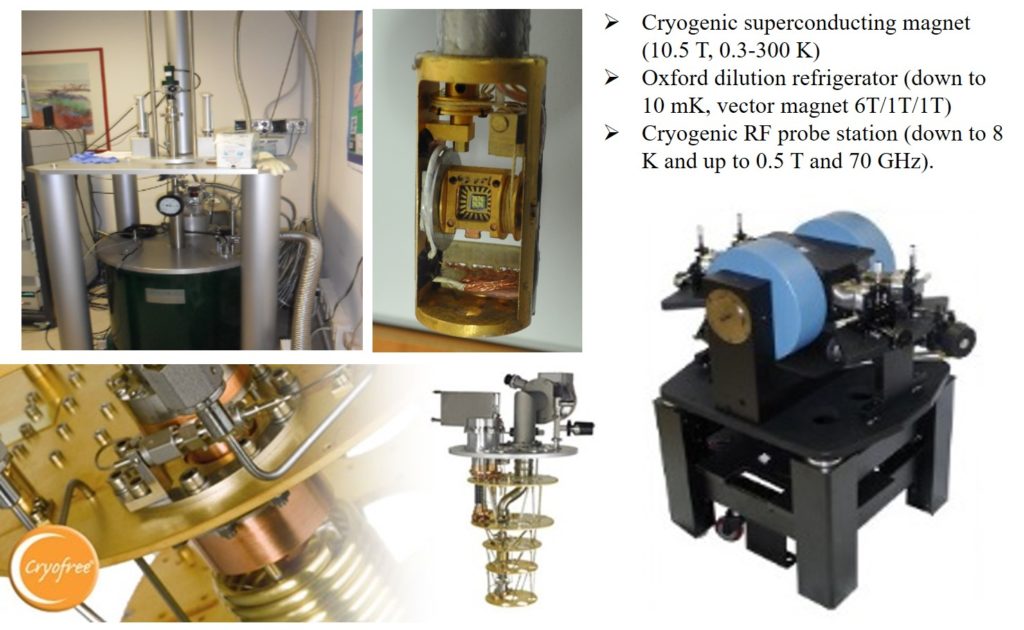Omnics group laboratories include:
- RF and LT spintronics and transport labs with a cryogenic RF probe station (down to 4 K and up to 0.5 T and 70 GHz), three superconducting magnets up to 10.5 T including a vector (6T, 1T, 1T) magnet combined to a dilution fridge (down to 10 mK). RF and LT spintronics labs are equipped for variable temperature DC magnetotransport and RF measurements (e.g. SAW and SRR characterization), vibrating sample magnetometry and a.c. susceptibility. The transport lab includes femtoamperometric systems, parameter and vector network analysers and an optical table for magnetospectroscopy, MOKE and FMR measurements.

- A lab-on-chip/biosensing laboratory for molecular diagnostics and cell studies optimizing biochips for RT-PCR, pM flow immunoassays, real-time monitoring of cellular processes (attachment, micromotion, migration, morphology, growth and apoptosis). Sensing facilities are equipped for electrochemistry, impendance spectroscopy, magnetoresistance, acoustic and optical (SPR and microscopy) read-out. On the microfluidics side, expertise spans from soft lithography to microchannels, valves, mixers, DEP separation and active microfluidics.
- A confocal/STED microscopy laboratory for characterization of biological samples and materials.
Moreover, the Omnics group has access to institute/university facilities:
- A nanofabrication facility, which relies on a class 1000/10000 clean room equipped with/for electron beam lithography, focused ion beam, mask aligners, a mask generator, reactive ion etching and ICP-RIE systems, evaporators, atomic layer deposition;
- A scanning probe lab, including a Veeco Multimode 8 with PicoForce interface, a Veeco Catalyst AFM system combined with TIRF and confocal microscope, a Park AFM, a NT-MDT AFM operating also in low vacuum, a WiTec AFM-Raman, an Omicron ultra-high vacuum variable-temperature STM, a Createc low-temperature STM also equipped for XPS, a micro-FTIR and a micro-XRF system;
- A lab for electron microscopy and structural characterization including TEM and high resolution SEM-FEG (point resolution smaller than 1 nm) equipped for EDS (Energy Dispersive X–ray Spectrometry) and allowing for operation under variable pressure conditions for the study of insulating and polymeric materials; an X-ray diffractometer of last generation.
- A biology laboratory including a sterile chamber for cell culture, a nano-spotter for microarrays, a nanoplotter, a fluorescence scanner and complete setups for proteomics and genomics;
